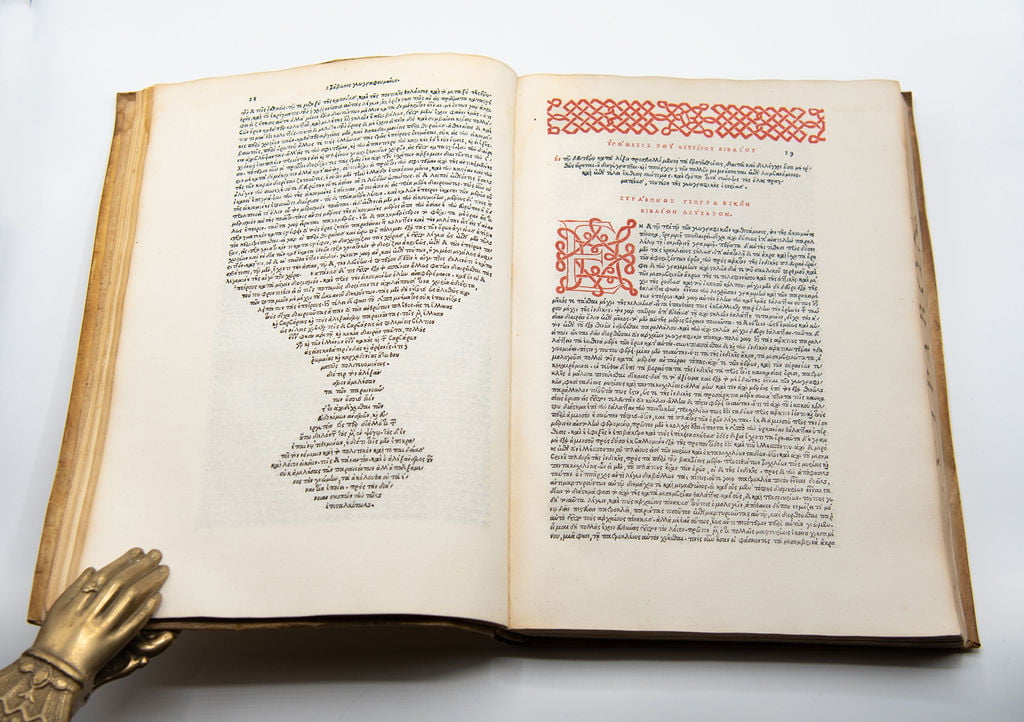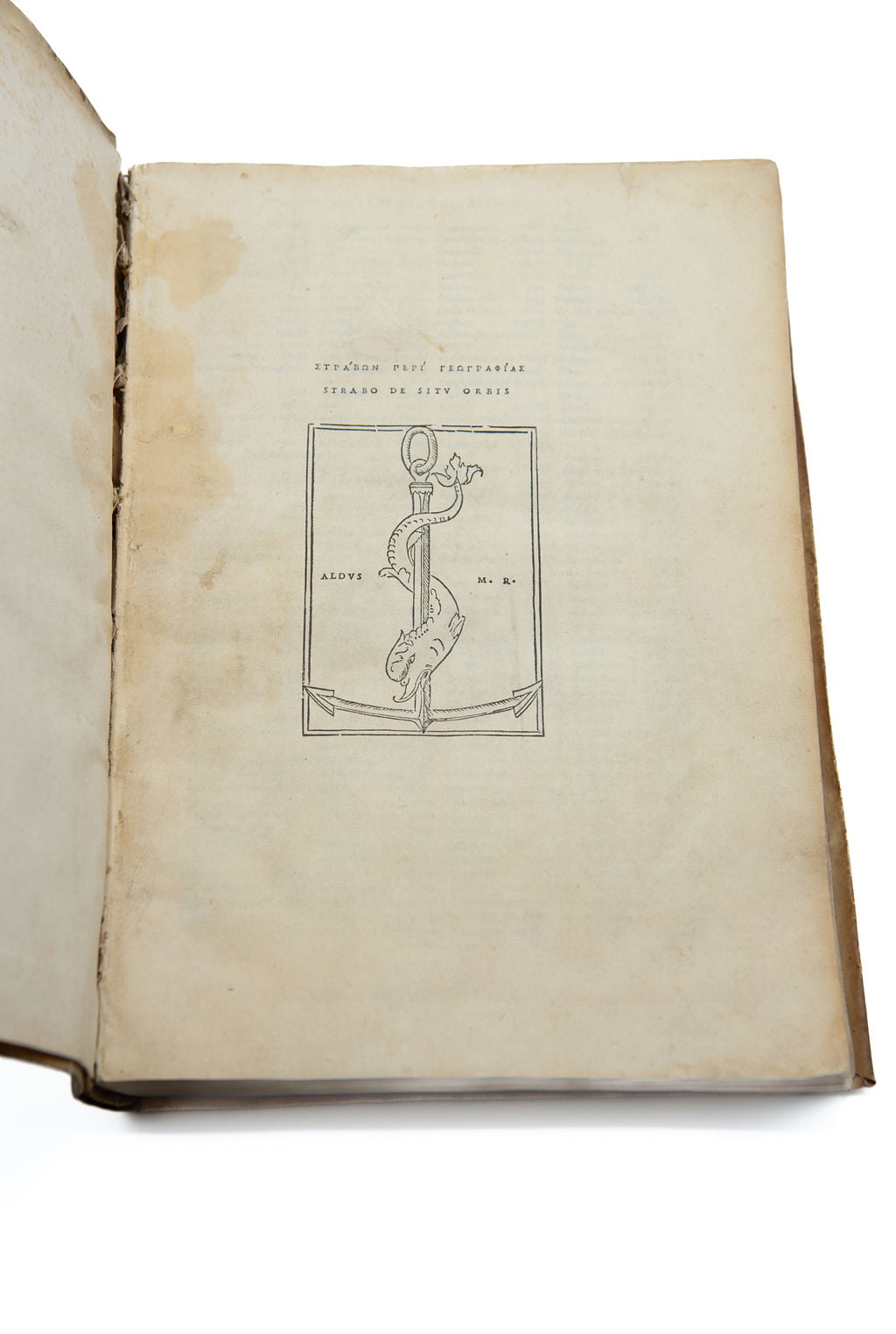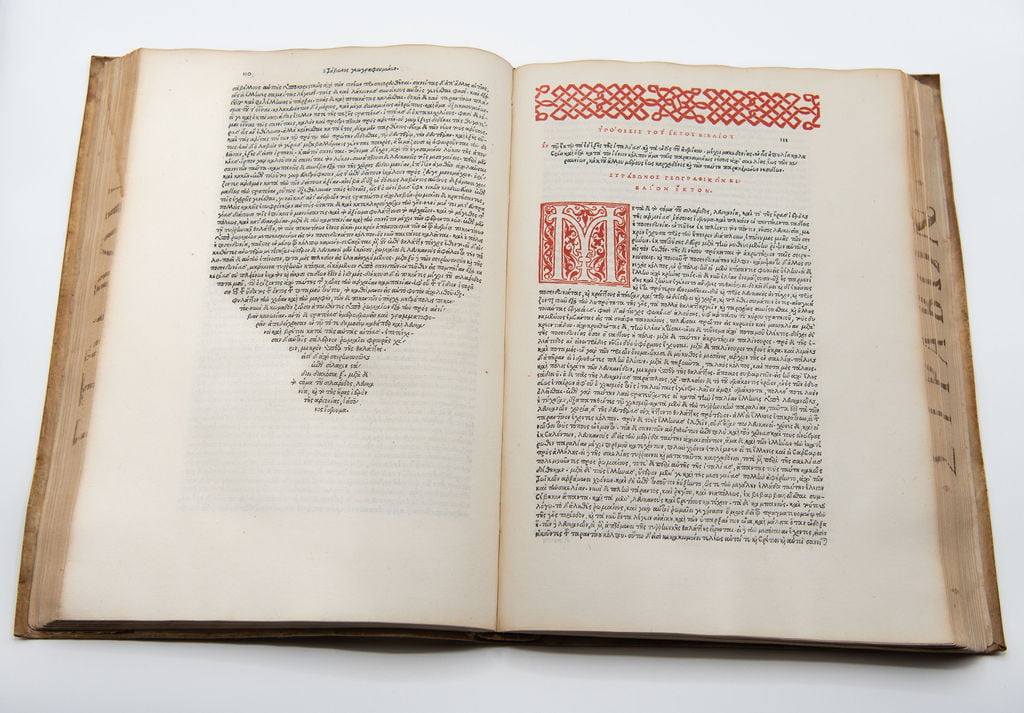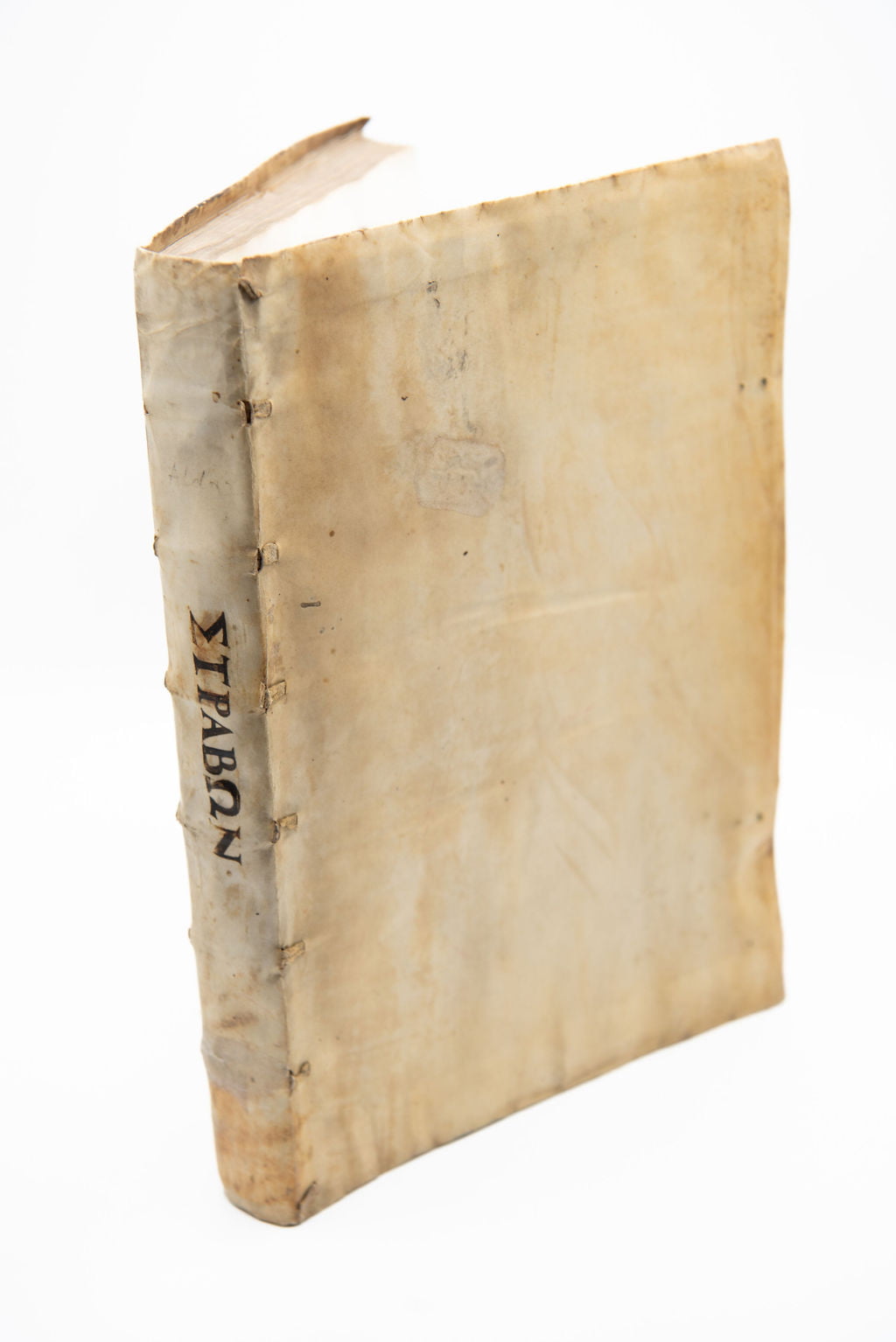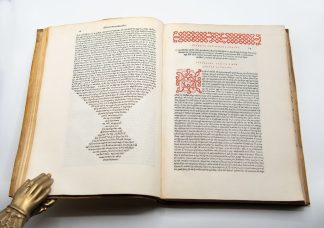STRABO
EDITIO PRINCEPS
De Situ Orbis
Venice, Heirs of Aldus Manutius, 1516£55,000.00
EDITIO PRINCEPS. Folio, pp. 348 (i.e. 366); Greek letter; Aldine device on title and final verso, elegant section titles, vine-work initials and head-pieces in red at beginning of each book; minor repair to title, light damp stains, mainly on gutter and upper margin; paper flaws on 65 just affecting a couple of letters. A very good, well-margined copy in nearly contemporary limp vellum, author’s name inked in Greek capitals along spine and fore-edge; slightly dust-soiled; Feltrinelli’s label on front pastedown and blind stamp on lower outer margin of front endpaper.
First edition of the original text of one of the earliest and most influential geographical surveys of Antiquity. Scion of a prominent family of the Pontus region, Strabo (64/63 BC-c. 25 AD) travelled extensively through Southern Europe, North Africa and Middle East, mostly during the peaceful reign of Augustus. The Geography is his only surviving work and the first comprehensive account of the subject as known to his contemporaries.
The topography, geology, history and political features of the main regions of the Roman world are thoroughly described, relying on first-hand investigation and many Greek sources now lost, such as the writings of the first systematic geographer, Eratosthenes (c.276- 195/4 BC), and of Hipparchus (c.190-120 BC). Above all, however, Strabo regards Homer as the most authoritative writer. Strabo’s descriptions of the Mediterranean regions, Asia Minor and Egypt are excellent, while those of Gaul and Britain are weaker. Almost unknown to the Romans, the Latin version of the Geography became the standard geographical reference work during the Middle Ages. Among many other significant remarks and hypotheses, Strabo was the first scholar to discuss in detail fossil formation and vulcanism (both in Book 3).
This editio princeps – beautifully enriched with section titles, capitals and head-pieces printed in red (an unusual feature for the Aldine press) – was accomplished by Benedetto Tirreno and Andrea Torresani, most likely with the help of Marco Musuro; the dedication to Alberto Pio of Carpi bears a touching encomium of Aldus, recently passed away. The text was drawn from a rather corrupted manuscript, now in the BnF (Par. gr. 1395). The enterprise was wholeheartedly encouraged by Jean Grolier, who urged Torresani to continue editing and publishing Greek and Latin classics, as Aldus had done throughout his career.
BM STC it., 648; Adams, S1903; Hoffmann III, 453; Renouard, 77:7; Brunet, V, 554; Graesse, VI, 505.In stock


